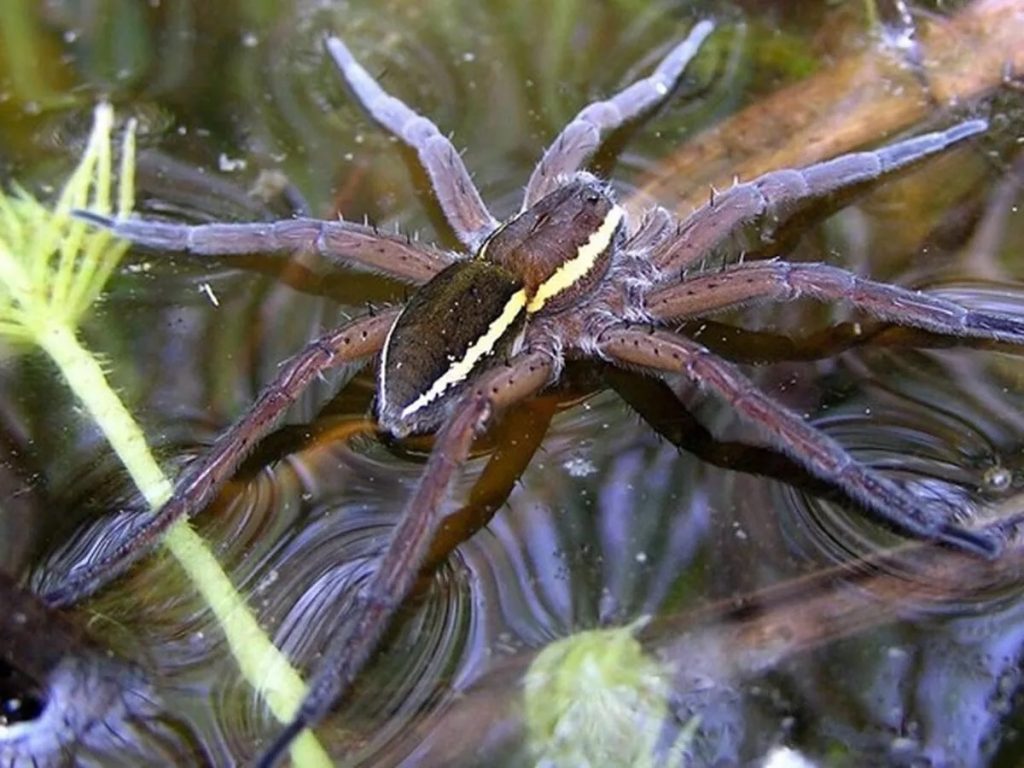
Spiders which are the size of a human hand, are making a comeback in the UK.
Continue reading “Spiders the size of rats are making a comeback in the UK”
Wildlife and conservation new, wild travel information and links for booking

Spiders which are the size of a human hand, are making a comeback in the UK.
Continue reading “Spiders the size of rats are making a comeback in the UK”Recognized as an incredibly popular species, with a great deal of conservation effort being put into its survival. The Queensland conservation council is urging the state government is calling for its remaining habitat to be protected, as logging continues.
Calls are being made to create a park to protect the species.
The Miles government promised (in June) to turn 50,000-60,000 hectares of high value ecosystems into a greater glider national park. Unfortunately, this plan gave detailed listings of where timber would be extracted, but did not include clear maps for areas to be protected. Quite understandably, conservationists are calling foul – it is not possible to deforest an area, and then call for its conservation.
The population of this species is estimated to have halved in just the last 20 years, which should officially declares it as vulnerable to extinction (it is true that this is often decided over 10 years, but still is a very bad sign). Other issues, is fragmentation of their forests – they are generally very unwilling to come down to ground level to travel to other trees. They can stay in the air for around 100m, but this means that a gap greater than this can isolate the population. They require eucalypt forests (this is almost all they eat, with plenty of large tree hollows to make home, and retreat into.
Will Australia step up, or will this species get pushed into planned extinction? Time will tell, though given Australias track record, we should not expect big things without a great deal of pressure from conservation groups, and publicity on what is happening, from around the world.
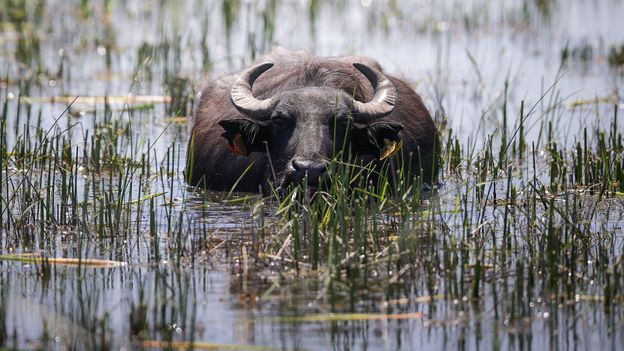
There are many species around the world which are so important to their habitat, that even a reduction in the population can cause problems – this is one of them. After tadpoles have lost their tails, many will climb onto the hairy back of the water buffalo, getting a ride to other rich feeding areas (and the buffalo gets any irritating flies eaten). There can be as many as 20 frogs on each water buffalo.
Water buffalo were first domesticated 3000 years ago, in Asia, but have proved to be so useful, there are now 200 million spread across 77 countries, on 5 continents. Initially considered as useful animals for plough and similar farm work, in recent times, it has been recognized for its ecosystem engineer duties.
Thriving in wetlands, they can force their way through places that other herbivores fail. While they are not native to many of their current homes, they are capable of filling ecological niches that have long been empty after the initial large cattle like animals were killed off, or all taken into captivity. It should be noted, that in some places, like Australia, there are few to no predators, to control such a large animal, which has lead to a population of 200,000. There is a native water buffalo (Anatolian).
A variety of characteristics help this species to easily fill the ecological niche of the European water buffalo (lost around 10,000 years ago). From transporting seeds in their fur, they fill in many of the roles that the extinct European water buffalo did in the long past. Even in places like the UK, which is one of the most nature depleted countries, the water buffalo are replacing long extinct species, and recovering ecosystems as a result.
This sort of behaviour has to be carefully managed, as in many places, introducing a closely related species can be very costly. In the UK, the grey squirrel has decimated the population of the native red squirrel, and this is not an isolated example, with many others from around the world. However, so long as their effect is closely managed, and there is not a closer relation to the missing species, the impact is likely to be a net positive. Over the last 50 years, 1/3 of the worlds wetlands have been lost, these species, when carefully managed, are likely to be able to bring some of this back.
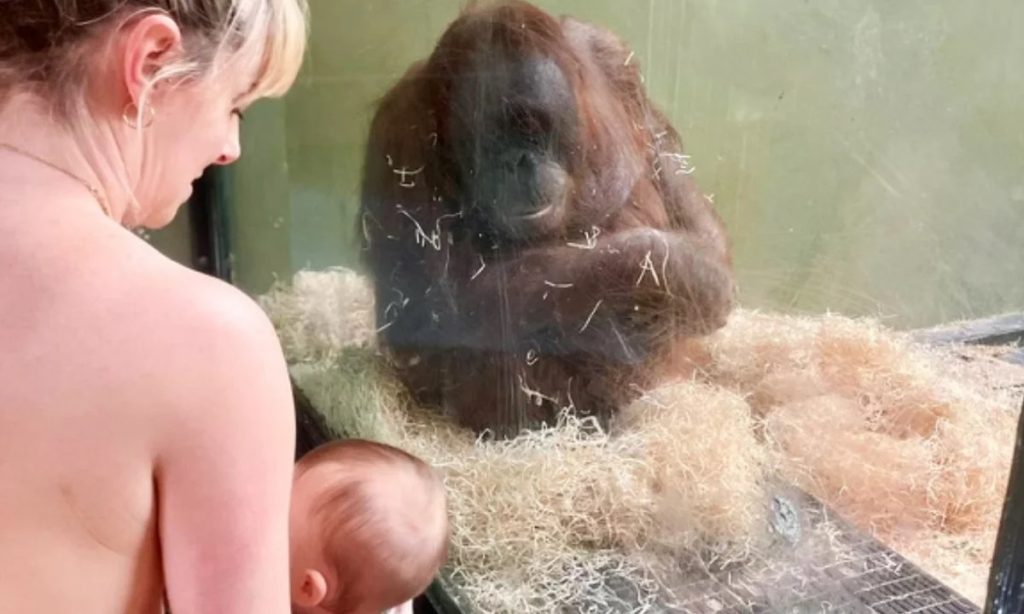
A female orangutan, who had failed to bond with either of her first two offspring (and as a result had both died), found 30 volunteer human mothers, to come in to breastfeed their babies in front of the orangutan.
The exhibit was shut, so that the mothers could breastfeed topless – allowing Mujur the 19 year old mother to be, to see what was happening. As can be seen from the image, the orangutan showed a great deal of interest in the breastfeeding – and as well, Mujur was shown videos of orangutans feeding their babies.
Continue reading “Dublin zoo has to get breastfeeding women to educate an orangutan”Livestock takes up roughly 20% of the worlds land, or around 50% of the worlds agricultural land. Astoundingly, around 1.3 billion people around the world are involved in the livestock industry.
The worlds remaining land wilderness, takes up just 25% of the worlds land – should we move toa system of growing meat in labs, we could almost double the amount of space for wildlife, which would allow many of the worlds endangered species to recover.
Apart form saving so much of the worlds wilderness, and wildlife, why should we do this? Well, firstly, the fact that people want things to stay as they are, is not new. Every new invention has lead to a change in the lives of many people – before farming came into existence, all the healthy men of each village (and in places, many of the healthy women) would have spent the majority of their time hunting. Looking at the natural world, animals like lion and leopard split their time between hunting and resting, with little else (apart from reproduction) being thought of.
As electric cars started to appear, the vast majority of car companies tried to stop their progress. Indeed, many spent their time buying inventions and smaller companies, just to kill their electric car program. This was not because they were intrinsically afraid of the electric car, but because they were afraid that if adopted, they might have a smaller market share than they did with the internal combustion engine car. As tends to happen in this situation, however, many of these companies are thought likely to go out of business in the next 2 decades (and it took a start-up, Tesla to fully make electric cars work – even now, many are still trying to go back). The same can be said for the factory production line, and many many others.
The problem is that livestock farming is only second to the fossil fuel industry, in terms of its contribution to climate change, so if humanity is to survive, it needs to change dramatically.
Why should we be worried about saving the worlds wildernesses? I think that a great deal of the population feels that we should save them for their own intrinsic value, but there is more than that. Rainforests around the world are the engine that supplies much of these areas rain, and without the rainforest often the area will collapse into desert.
Some suggest that we should all go to a plant-based diet, and certainly this would do what we want (though it should be noted, that this leaves the livestock industry in the same place – indeed, the livestock industry as it currently is, must have its days numbered, as humanity cannot afford its carbon footprint or it will continue our descent into climate breakdown). The only alternative to this is to produce the dairy and meat through other means; and these means are multiplying around the world, as it is recognized that there is a lot of money available for those who solve it early.
These range from growing meat on a scaffold from cells taken from a live animal. This idea is rapidly growing in popularity, though some think that this is a dead end, and instead a lot of people are looking at brewing microbes, which can be made to have a taste and texture that will make them indistinguishable from the real thing. This would also allow the unhealthy parts like fat to be not grown. It avoids the need for a lot of land, needs no fertilizer and greatly reduces the amount of fresh water needed (some can use salt water).
Protectionism is not restricted to farmers, with many governments getting in on the act, and in the EU a new group is pushing for a continent wide ban.
I think that these things will be developed somewhere, and we will miss out, if this happens in places like China (they have a great incentive, as their population eats little real meat, but as the wealth of people are increasing, they are demanding to eat a diet more like the west. For most of us, we are going to be watching from the sidelines, in terms of what happens next, but we can write to our representatives, and make sure that livestock owners are not the only voices that they hear.
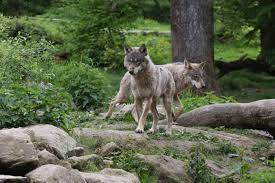
The wolf disappeared from Holland around 1870, though their decline was rapid – in 1760 (just over 100 years before) people in Brabant talked of a wolf plague). In 2015, the wolf was first sighted in Holland, and while some people had said that Holland was to densly populated to allow the wolf to return, this seemed to be wrong. Wolves have returned to many of the countries around Holland, and so it seems quite odd to think that it wasn’t considered that they would cross into Holland.
In 2022, there were thought to be 4 packs of wolves (including 16 pups) as well as an individual wolf. This number has, however, grown fast in the time since, and the current number is thought to be 9 packs. What is even more exciting, it is predicted that the country can support between 23 and 56 wolf packs at a minimum – which as a wolf pack contains 6-7 wolves on average, means a total population of between 138 and 392. It should be noted, that this number is not likely to remain genetically healthy into the long-term, however Germany has a wolf population of over 1000, and while these are mostly based in the East of the country, wolves disperse great distances, so it is likely that genetic material will arrive naturally, relatively regularly. There is also a founding (if small) population of wolves in Belgium, thought to number between 15 and 24 (it is also predicted to grow by 30% a year.
There is a problem, the Hoge-Velue is one of Hollands biggest reserves, but it is owned privately. They have decided that wolves are not welcome, and are making efforts to kill those that get through their fence. This is because, without the wolf, deer are easily seen within the reserve, and they believe that the number of tourists will dry up, if it becomes hard to see the red deer, as well as the roe deer and boar.
I find this attitude rather baffling and perverse. Furthermore, when we were there last year, we spent time in the government owned reserve, which borders the Hoge-Velue, this is government owned, and wolves have settled here. I spent a number of nights within the reserve in a hide. I did not get to see a wolf (though I met a local who had a wide range of fantastic shots he had taken over the previous years), but while watching and waiting in the hide, I saw red and roe deer, as well as wild boar, in significant numbers. The idea that someone would believe that the amount of tourism visiting after wolves return would decrease, seems quite contrary to what usually happens elsewhere.
Wolves are a part of Hollands animal food web, and while it is likely to take some time to get used to living with them present once again, it is going to allow the whole ecosystem to thrive. I feel frustrated, that in the UK, we do not have a similar situation, where wolves can simply wander across an unmarked border. I do believe that in the end, wolves will return to the UK (our food web is horrifically out of balance because of a lack of predators), however, on the last occasion that it was debated, numbers from a very specific country were used to block any further discussion (Click here to read a previous article on this subject, or visit the wolf page here to get a complete list of all occasions that they have been mentioned on this site)

The UK has been culling badgers since 2013, and since then over 230,000, yet a recent study has shown that vaccination is far more successful than culling.
This trial in Cornwall, found that the rate of bTB in the study area fell to zero.
Why is this important? One of the big shames of the British government is the fact that experts have been telling them since the beginning of the cull, that it will not work. This is for a very simple reason. Badgers are required to mingle to breed, and when you cull badgers, while you can largely eliminate them in the centre of your trial area, in the area further out, you merely reduce the numbers.
As a result, young males and females that are looking for a mate are required to roam further in order to find one. As a result, any local concentrations of bTB get spread around, causing the rate of the illness to increase. The study area covered 12 farms, and they vaccinated 265 badgers.
The next step is to fund a study over a far larger area.
It should be noted, that farmers funded the study, and it has been shown that not only are vaccines more effective at eliminating bTB, but also significantly cheaper. Furthermore, they found that more badgers were vaccinated per km than were culled on nearby land – suggesting a far higher reach within the badger population.
Might we finally be at a place, where with bTB outbreaks, we can vaccinate rather than cull the badgers, so as to reduce the spread in cattle (though as I have written before, much of the spread comes from moving cattle around, rather than from the badgers anyway.
In south Africa, the bTB reservoir is found within the wild lion population. Understandably, few people would want these lions to be culled, but the ability to fire vaccine darts at them, might well be feasible in eliminating bTB here as well, where around 54% of lions have been shown to carry the illness. Whether or how fast the vaccine idea will reach South Africa is something that we will have to look out for.
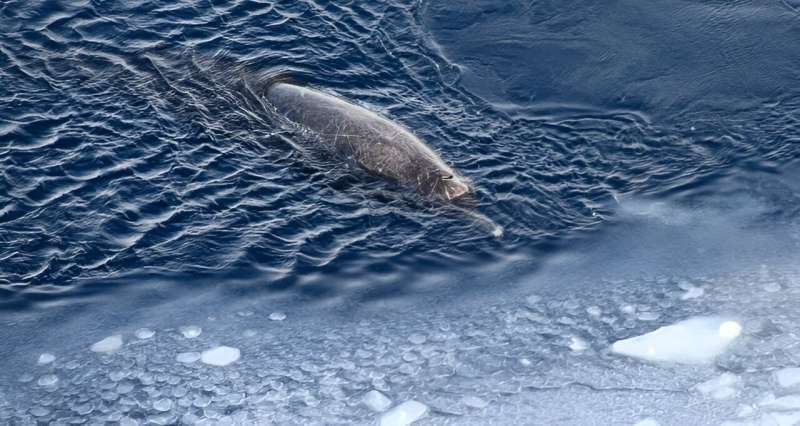
The beaked whale species are a family of rarely seen whales. Despite there being 22 species of beaked whale (which we know about) they are rarely seen, and some have only been described in recent years.
Why are they seen so rarely? because they have a record breaking ability to hold their breath being able to hold it for over an hour (reasonably regularly) and have been recorded in dives lasting over 100 minutes. After sightings of this species, the researchers did a search and analysis of sightings between 1980 and 2000. Just 108 sightings were made, accounting for 1125 individuals.
Continue reading “A rare whale species observed on Antarctic expedition”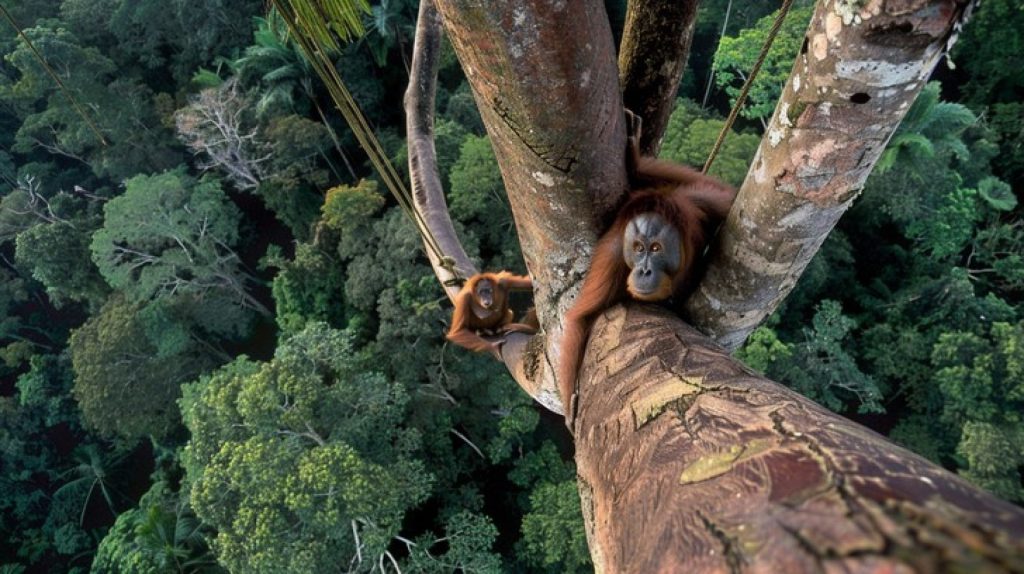
Life is hard in the Indonesian rainforest – compared to Africa and South America, there is very little to be found to eat (except in specific areas. As a result, orangutans become solitary, with the only time they are seen together is a mother with young, or a courting couple. Another problem, is demonstrated here – there is so little food to be had, that every food opportunity has to be realized. This has meant that orangutans have become the best climbers (followed by Chimpanzee and then Gorilla), as where ever the food is, it needs to be accessed.
It is true, that with tools, humans can become even better climbers (as can be seen from the image), which is taken from further up the tree than the orangutans have even climbed.
Continue reading “Orangutans climb incredibly high – no space for acrophobia”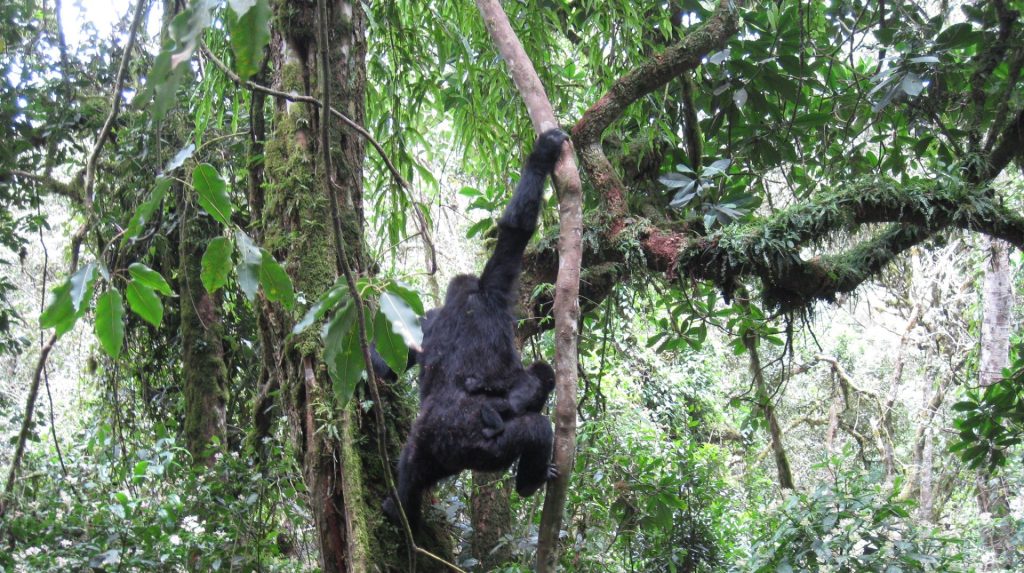
Kahuzi-Biega National Park was established in 1937 by the Belgium colonial rulers and then expanded in 1975. It now covers 6000 square km or 2300 square miles. Roughly 13000 Batwa were cleared out of the area to make way for the park (along with other people who had settled more recently).
Continue reading “On the founding of Kahuzi-Biega National Park, locals were pushed out -they now have the right to return, what will happen”








Join as an ambassador supporter to
support this site, help save wildlife
and make friends & log in

